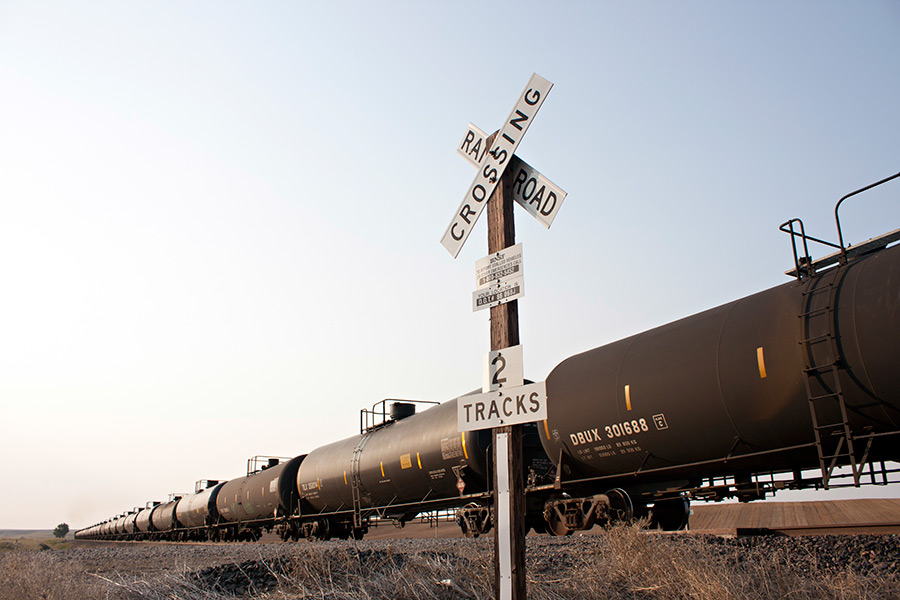In an effort to safely move massive oil trains from North Dakota’s Bakken oil fields, BNSF Railway has told shippers that it is implementing its own rules to try and prevent explosive derailments and accidental spills.
In a letter to its customers on March 30, the railroad announced it would require oil trains to travel at slower speeds through populated areas, increase track inspections along waterways and encourage shippers to use safer and stronger tank cars.
The announcement comes less than two months after a BNSF oil train derailed and exploded in Illinois. No one was injured in the accident.
“As we are all aware, recent incidents involving rail transportation of shale crude have continued to rise concerns among customers, railroads and the communities we serve on the ability of this particular commodity to be moved safely,” wrote Steve Bobb, BNSF executive vice president and chief marketing officer, and Greg Fox, executive vice president and chief operations officer, in a joint letter published online. “We know this commodity can be moved safely. It requires the right tank cars and ongoing risk reduction.”
In the letter, Bobb and Fox said that the railroad would increase the number of track inspections along “critical waterways,” including the Flathead and Kootenai rivers and Whitefish Lake. Starting March 25, the railroad also required engineers running oil trains through large municipal areas with populations over 100,000 people to not exceed 35 miles per hour. That would not apply to trains running through rural areas, but BNSF spokesperson Matt Jones said that trains along Glacier National Park and through the Flathead Valley usually run anywhere from 25 to 45 miles per hour.
The railroad is also urging shippers to use stronger tank cars and will ban the use of DOT-111 and unmodified CPC-1232 cars within three years. The DOT-111 tank car was at the center of the deadly 2013 oil train wreck in Quebec that killed 47 people and leveled more than 30 buildings.
Tougher CPC-1232 tank cars were introduced soon after, but a series of oil train wrecks in February and March of this year showed that the new tank cars were not as safe as the industry had believed. In January, the railroad began to charge oil shippers $1,000 every time they used an older tank car. In March, the American Fuel & Petrochemical Manufactures filed a lawsuit against the railroad alleging that new surcharge was unfair and illegal. The railroad has said the surcharge will encourage shippers to improve tank car safety. Most tank cars are owned by third-party leasing companies and not the railroads themselves.
